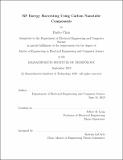| dc.contributor.advisor | Jeffrey H. Lang. | en_US |
| dc.contributor.author | Chen, Daibo,M. Eng.Massachusetts Institute of Technology. | en_US |
| dc.contributor.other | Massachusetts Institute of Technology. Department of Electrical Engineering and Computer Science. | en_US |
| dc.date.accessioned | 2020-02-10T21:37:36Z | |
| dc.date.available | 2020-02-10T21:37:36Z | |
| dc.date.copyright | 2019 | en_US |
| dc.date.issued | 2019 | en_US |
| dc.identifier.uri | https://hdl.handle.net/1721.1/123712 | |
| dc.description | This electronic version was submitted by the student author. The certified thesis is available in the Institute Archives and Special Collections. | en_US |
| dc.description | Thesis: M. Eng., Massachusetts Institute of Technology, Department of Electrical Engineering and Computer Science, 2019 | en_US |
| dc.description | Cataloged from student-submitted PDF version of thesis. | en_US |
| dc.description | Includes bibliographical references (pages 193-195). | en_US |
| dc.description.abstract | This thesis investigates the feasibility of a RF energy harvester using carbon-nanotube (CNT) transistors. The Cockcroft-Walton (CW) multiplier, a passive voltage multiplier topology, is chosen to turn AC RF energy into a usable DC voltage. This topology is first analyzed by hand in order to develop intuition behind multiplier operation and to guide multiplier design. While the CW multiplier has been studied previously, many analyses have neglected the effects of non-zero source resistance, non-zero switch resistance, and switch parasitic capacitance. In contrast, this thesis analyzes the CW multiplier in detail and develops a quick and simple way to design CW multipliers for use in a RF energy harvester. The completed circuit analysis is used to guide the design of a 3-stage CW multiplier that uses CNT FETs having a gate length of 5 um and a channel width of 1 mm. The antenna input source is modeled as an AC Thevenin voltage source with an output impedance of 50 [omega]. | en_US |
| dc.description.abstract | The specification for input voltage amplitude of the Thevenin voltage source ranges from 141 mV to 2 V. One version of the multiplier was designed for input frequencies between 1-100 MHz. According to simulations, the designed multiplier should produce an output power of 157 uW at 30 MHz for an input voltage amplitude of 1.4 V and a load resistance of 119 k[omega]. The same multiplier was laid out and fabricated and produced an output power of 58 uW at 30 MHz for an input voltage amplitude of 1.4 V and a load resistance of 119 k[omega]. The fabricated circuit produced a lower output power than expected due to the fabricated transistors having a lower than expected current density. Despite the difference between simulation and experimental results, the MHz frequency CNT-based CW multiplier works well and is the first power converter that uses CNT FETs. In addition, a subsequent multiplier was designed for operation at 2.45 GHz. | en_US |
| dc.description.abstract | According to simulations, the 2.45 GHz multiplier should produce an output power of 106 uW for an input voltage amplitude of 1.4 V and a load resistance of 119 k[omega]. Through simulation and experimental testing, this thesis proves that a CNT-based RF energy harvester is possible. | en_US |
| dc.description.statementofresponsibility | by Daibo Chen. | en_US |
| dc.format.extent | 195 pages | en_US |
| dc.language.iso | eng | en_US |
| dc.publisher | Massachusetts Institute of Technology | en_US |
| dc.rights | MIT theses are protected by copyright. They may be viewed, downloaded, or printed from this source but further reproduction or distribution in any format is prohibited without written permission. | en_US |
| dc.rights.uri | http://dspace.mit.edu/handle/1721.1/7582 | en_US |
| dc.subject | Electrical Engineering and Computer Science. | en_US |
| dc.title | RF energy harvesting using carbon nanotube components | en_US |
| dc.title.alternative | Radiofrequency energy harvesting using carbon nanotube components | en_US |
| dc.type | Thesis | en_US |
| dc.description.degree | M. Eng. | en_US |
| dc.contributor.department | Massachusetts Institute of Technology. Department of Electrical Engineering and Computer Science | en_US |
| dc.identifier.oclc | 1138946155 | en_US |
| dc.description.collection | M.Eng. Massachusetts Institute of Technology, Department of Electrical Engineering and Computer Science | en_US |
| dspace.imported | 2020-02-10T21:37:34Z | en_US |
| mit.thesis.degree | Master | en_US |
| mit.thesis.department | EECS | en_US |
